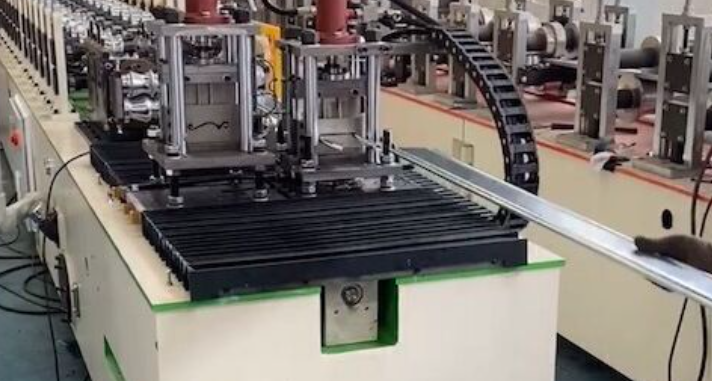When choosing a roll forming machine, understanding the distinction between single-profile and multi-profile machines is crucial. Each type has its advantages, depending on the production needs and industry demands. Below is a comparison of these two machine types based on their capabilities, flexibility, and use cases:
1. Capabilities
- Single-Profile Roll Forming Machines:
- These machines are designed to produce one specific profile (e.g., a single type of metal roofing panel or structural component).
- They excel in high-volume production of a specific part, ensuring precision and efficiency for long production runs.
- Commonly used for standardized profiles, such as corrugated panels, purlins, or decking profiles, where large quantities of a uniform product are needed.
- Multi-Profile Roll Forming Machines:
- These machines are capable of producing multiple profiles on the same machine, often by changing out rollers or tooling, or using advanced adjustable technology.
- They offer greater flexibility, enabling manufacturers to switch between different profiles without investing in separate machines.
- Common in industries that require a variety of metal shapes or where product diversity is a priority, such as roofing contractors or steel building manufacturers who produce both PBR panels and standing seam panels on demand.
2. Flexibility
- Single-Profile Machines:
- Less flexible since they are tailored for one specific profile.
- Best suited for applications where the same product is made continuously and there is little need for changeovers.
- Multi-Profile Machines:
- Highly flexible, allowing manufacturers to adapt to different production requirements without the need to buy multiple machines.
- These machines often feature quick-change tooling or adjustable settings to switch between profiles, making them ideal for operations that require versatility and product variety.
3. Use Cases
- Single-Profile Machines:
- Ideal for mass production of a specific metal part or profile.
- Commonly used in large-scale construction projects where one profile, such as metal roof panels or decking, is needed in bulk.
- They are typically found in operations that have stable demand for a singular product, like metal building manufacturers or metal roofing suppliers.
- Multi-Profile Machines:
- Suited for manufacturers who need to produce a variety of profiles on demand. For example, roofing contractors who offer different panel styles or construction companies that require various profiles for different applications (e.g., wall panels, roofing panels, and structural components).
- They offer cost efficiency and space-saving benefits, as a single machine can perform the work of several, reducing the need for multiple setups.
- Common in custom manufacturing environments, where a wide range of profiles is necessary, or for smaller businesses looking to diversify their product offerings without significant additional investment.
Conclusion
In summary, the choice between a single-profile and a multi-profile roll forming machine depends largely on the manufacturer’s needs. Single-profile machines are best for operations focused on producing a large volume of a single product with high efficiency, while multi-profile machines provide the flexibility to produce different profiles, making them ideal for businesses requiring diversity and adaptability. Understanding the trade-offs between specialization and versatility will help guide the decision on which machine type to invest in.



